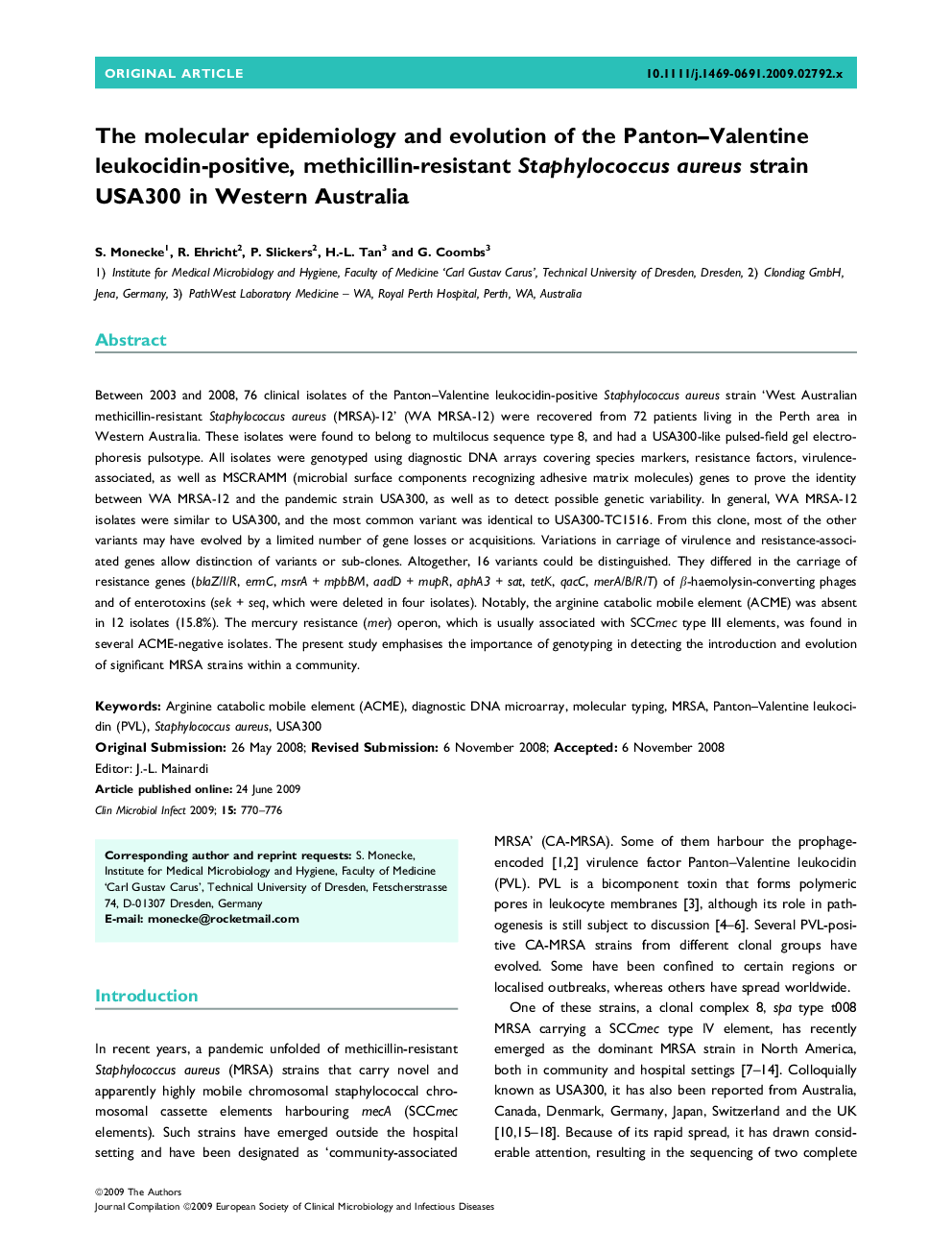| کد مقاله | کد نشریه | سال انتشار | مقاله انگلیسی | نسخه تمام متن |
|---|---|---|---|---|
| 3397671 | 1222240 | 2009 | 7 صفحه PDF | دانلود رایگان |

Between 2003 and 2008, 76 clinical isolates of the Panton–Valentine leukocidin-positive Staphylococcus aureus strain ‘West Australian methicillin-resistant Staphylococcus aureus (MRSA)-12’ (WA MRSA-12) were recovered from 72 patients living in the Perth area in Western Australia. These isolates were found to belong to multilocus sequence type 8, and had a USA300-like pulsed-field gel electrophoresis pulsotype. All isolates were genotyped using diagnostic DNA arrays covering species markers, resistance factors, virulence-associated, as well as MSCRAMM (microbial surface components recognizing adhesive matrix molecules) genes to prove the identity between WA MRSA-12 and the pandemic strain USA300, as well as to detect possible genetic variability. In general, WA MRSA-12 isolates were similar to USA300, and the most common variant was identical to USA300-TC1516. From this clone, most of the other variants may have evolved by a limited number of gene losses or acquisitions. Variations in carriage of virulence and resistance-associated genes allow distinction of variants or sub-clones. Altogether, 16 variants could be distinguished. They differed in the carriage of resistance genes (blaZ/I/R, ermC, msrA + mpbBM, aadD + mupR, aphA3 + sat, tetK, qacC, merA/B/R/T) of β-haemolysin-converting phages and of enterotoxins (sek + seq, which were deleted in four isolates). Notably, the arginine catabolic mobile element (ACME) was absent in 12 isolates (15.8%). The mercury resistance (mer) operon, which is usually associated with SCCmec type III elements, was found in several ACME-negative isolates. The present study emphasises the importance of genotyping in detecting the introduction and evolution of significant MRSA strains within a community.
Journal: Clinical Microbiology and Infection - Volume 15, Issue 8, August 2009, Pages 770–776